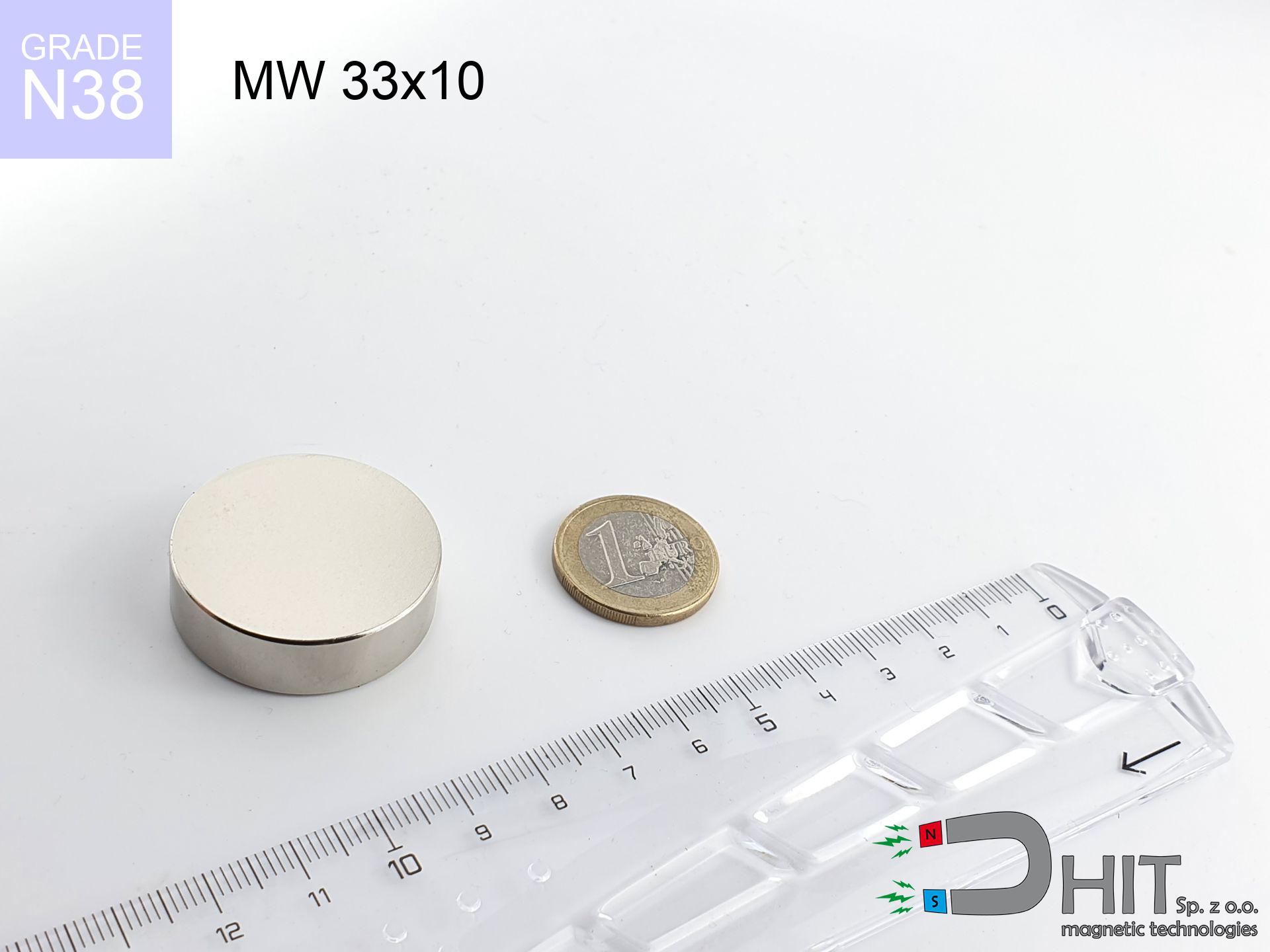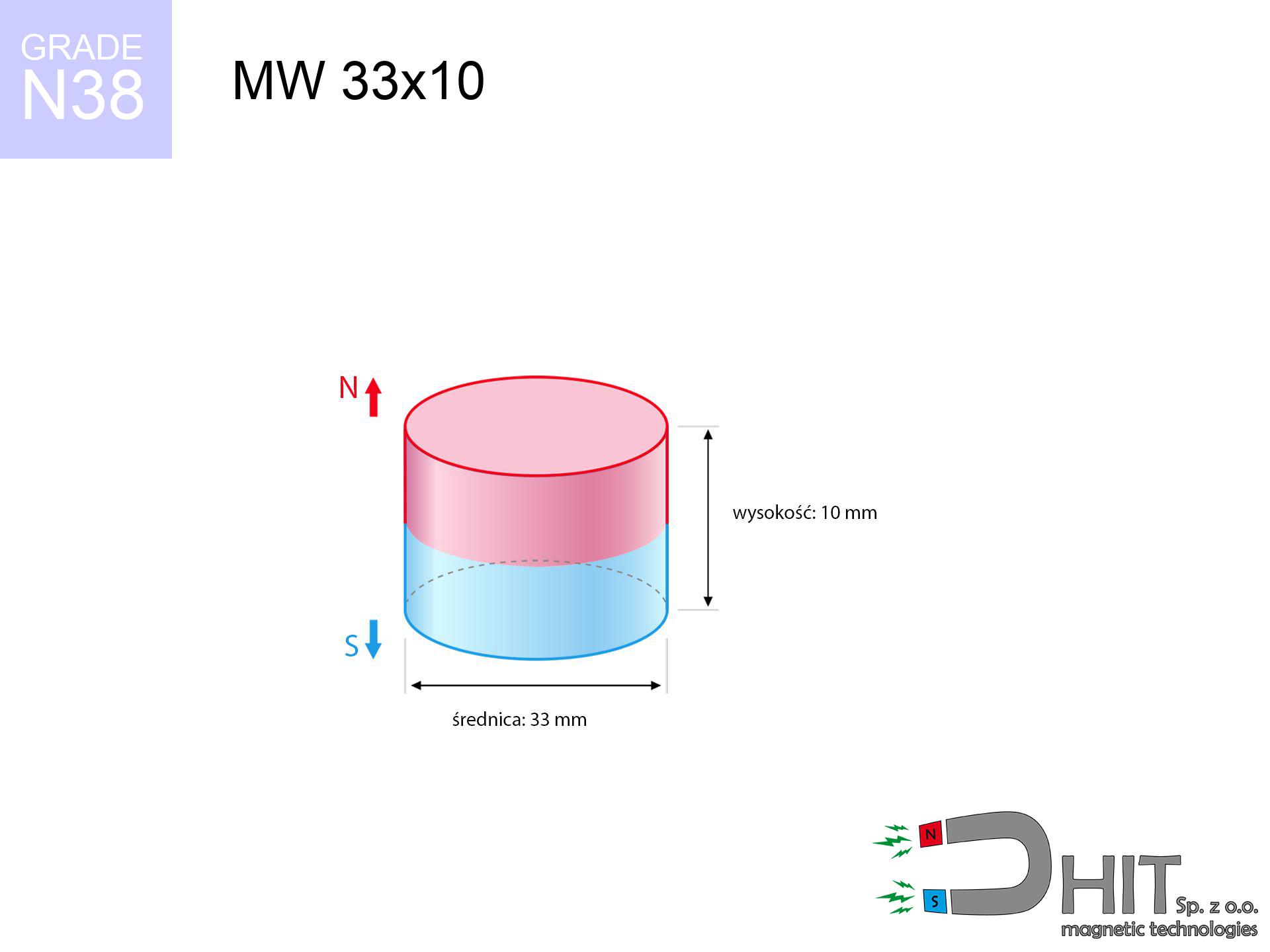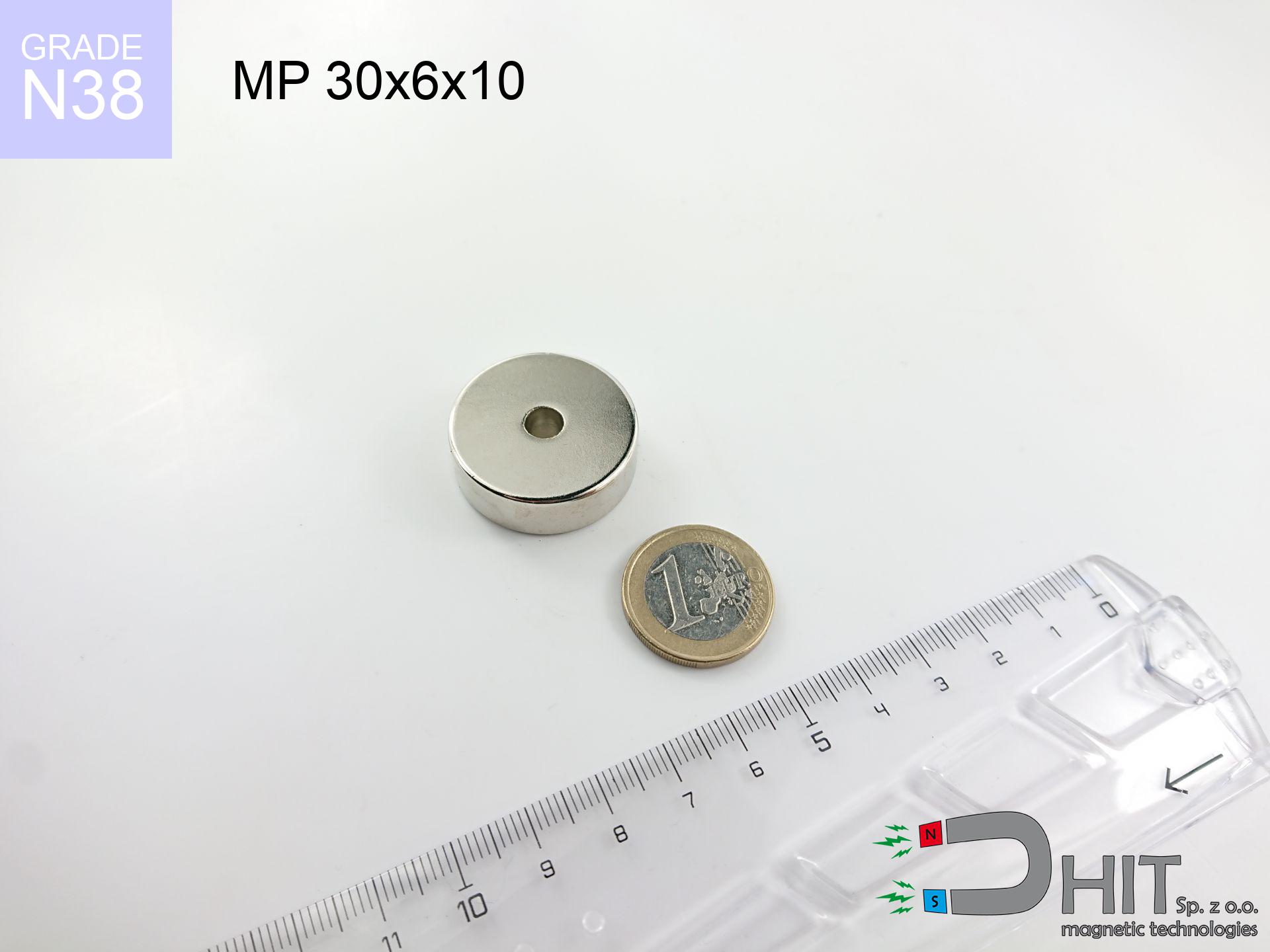MW 33x10 / N38 - cylindrical magnet
cylindrical magnet
Catalog no 010057
GTIN: 5906301810568
Diameter Ø
33 mm [±0,1 mm]
Height
10 mm [±0,1 mm]
Weight
64.15 g
Magnetization Direction
↑ axial
Load capacity
18.25 kg / 178.97 N
Magnetic Induction
321.26 mT
Coating
[NiCuNi] nickel
26.52 ZŁ with VAT / pcs + price for transport
21.56 ZŁ net + 23% VAT / pcs
bulk discounts:
Need more?Want to talk magnets?
Give us a call
+48 888 99 98 98
if you prefer get in touch via
inquiry form
the contact section.
Specifications as well as form of neodymium magnets can be estimated on our
power calculator.
Order by 14:00 and we’ll ship today!
Magnetic properties of material N38
Physical properties of sintered neodymium magnets Nd2Fe14B at 20°C
Shopping tips
Strengths as well as weaknesses of NdFeB magnets.
Besides their durability, neodymium magnets are valued for these benefits:
- They have stable power, and over nearly ten years their attraction force decreases symbolically – ~1% (in testing),
- Magnets effectively resist against loss of magnetization caused by ambient magnetic noise,
- Thanks to the smooth finish, the surface of nickel, gold, or silver gives an professional appearance,
- They show high magnetic induction at the operating surface, making them more effective,
- Through (adequate) combination of ingredients, they can achieve high thermal resistance, allowing for functioning at temperatures reaching 230°C and above...
- Thanks to modularity in shaping and the ability to adapt to specific needs,
- Wide application in innovative solutions – they are utilized in mass storage devices, brushless drives, precision medical tools, also multitasking production systems.
- Compactness – despite small sizes they offer powerful magnetic field, making them ideal for precision applications
Characteristics of disadvantages of neodymium magnets and ways of using them
- At strong impacts they can break, therefore we recommend placing them in strong housings. A metal housing provides additional protection against damage, as well as increases the magnet's durability.
- NdFeB magnets lose force when exposed to high temperatures. After reaching 80°C, many of them experience permanent weakening of power (a factor is the shape as well as dimensions of the magnet). We offer magnets specially adapted to work at temperatures up to 230°C marked [AH], which are very resistant to heat
- Magnets exposed to a humid environment can corrode. Therefore during using outdoors, we suggest using water-impermeable magnets made of rubber, plastic or other material protecting against moisture
- Due to limitations in producing threads and complex shapes in magnets, we recommend using cover - magnetic mount.
- Possible danger related to microscopic parts of magnets are risky, if swallowed, which gains importance in the context of child health protection. Additionally, small elements of these devices are able to disrupt the diagnostic process medical in case of swallowing.
- With budget limitations the cost of neodymium magnets is economically unviable,
Best holding force of the magnet in ideal parameters – what it depends on?
The specified lifting capacity concerns the peak performance, obtained under optimal environment, meaning:
- using a base made of low-carbon steel, serving as a circuit closing element
- with a cross-section no less than 10 mm
- characterized by smoothness
- with total lack of distance (no impurities)
- under vertical force vector (90-degree angle)
- at conditions approx. 20°C
Impact of factors on magnetic holding capacity in practice
Holding efficiency is influenced by specific conditions, mainly (from most important):
- Gap between magnet and steel – even a fraction of a millimeter of separation (caused e.g. by veneer or dirt) drastically reduces the magnet efficiency, often by half at just 0.5 mm.
- Loading method – declared lifting capacity refers to detachment vertically. When applying parallel force, the magnet holds much less (often approx. 20-30% of nominal force).
- Wall thickness – thin material does not allow full use of the magnet. Part of the magnetic field penetrates through instead of converting into lifting capacity.
- Material composition – different alloys attracts identically. Alloy additives weaken the interaction with the magnet.
- Base smoothness – the smoother and more polished the surface, the larger the contact zone and higher the lifting capacity. Roughness acts like micro-gaps.
- Thermal factor – high temperature reduces magnetic field. Exceeding the limit temperature can permanently demagnetize the magnet.
* Lifting capacity was determined using a steel plate with a smooth surface of optimal thickness (min. 20 mm), under vertically applied force, however under shearing force the lifting capacity is smaller. Additionally, even a minimal clearance {between} the magnet’s surface and the plate reduces the lifting capacity.
Warnings
GPS and phone interference
An intense magnetic field disrupts the operation of magnetometers in smartphones and GPS navigation. Maintain magnets close to a device to avoid damaging the sensors.
Dust is flammable
Powder created during cutting of magnets is flammable. Avoid drilling into magnets without proper cooling and knowledge.
This is not a toy
Adult use only. Small elements pose a choking risk, causing severe trauma. Keep out of reach of kids and pets.
Magnet fragility
Neodymium magnets are ceramic materials, which means they are prone to chipping. Clashing of two magnets will cause them breaking into shards.
Power loss in heat
Monitor thermal conditions. Heating the magnet above 80 degrees Celsius will ruin its magnetic structure and pulling force.
Pacemakers
Health Alert: Neodymium magnets can turn off heart devices and defibrillators. Stay away if you have medical devices.
Electronic hazard
Equipment safety: Strong magnets can ruin data carriers and delicate electronics (heart implants, hearing aids, timepieces).
Serious injuries
Risk of injury: The pulling power is so great that it can result in hematomas, pinching, and broken bones. Protective gloves are recommended.
Conscious usage
Use magnets with awareness. Their huge power can surprise even experienced users. Stay alert and do not underestimate their force.
Metal Allergy
Certain individuals have a hypersensitivity to nickel, which is the typical protective layer for neodymium magnets. Frequent touching might lead to dermatitis. We suggest use protective gloves.
Important!
Want to know more? Check our post: Are neodymium magnets dangerous?





![UMGZ 16x13x5 [M4] GZ / N38 - magnetic holder external thread UMGZ 16x13x5 [M4] GZ / N38 - magnetic holder external thread](https://cdn3.dhit.pl/graphics/products/um-16x13x5-m4-gz-cor.jpg)

![UMP 97x40 [M8+M10] GW F300 kg / N38 - search holder UMP 97x40 [M8+M10] GW F300 kg / N38 - search holder](https://cdn3.dhit.pl/graphics/products/ump97x40-m8+m10-gw-f-300-kg-kic.jpg)

